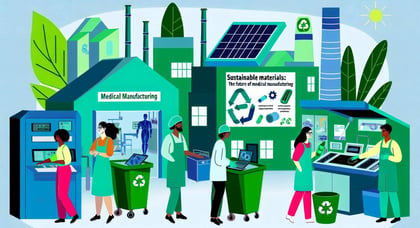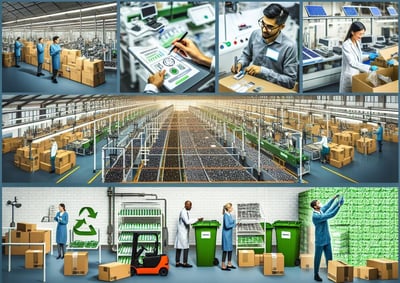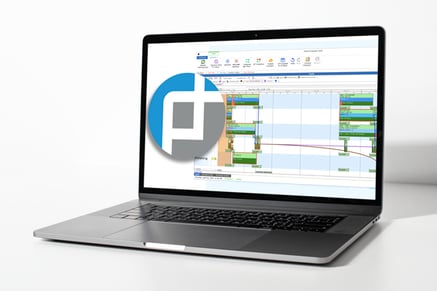Topics: Real-Time Data, PlanetTogether Software, Integrating PlanetTogether, Sustainable Materials Management, Reduce Waste, Optimize Schedules to Maximize Efficiency, Eco-Friendly, Optimize Logistics Routes
The call for sustainability has become increasingly urgent across all industries. In the medical manufacturing sector, the push towards eco-friendly practices and products is not only a moral imperative but also a strategic necessity. As a production planner, you play a crucial role in driving this transition towards sustainable materials.
In this blog, we'll explore the adoption of sustainable materials for eco-friendly medical products and how integration between planning software like PlanetTogether and ERP, SCM, and MES systems can streamline this process.

The medical industry has long been focused on innovation and patient care, but it's also a significant contributor to environmental pollution. From single-use plastics to hazardous chemicals, traditional medical products often have a detrimental impact on the planet. However, the tide is turning as consumers, regulatory bodies, and industry leaders demand more sustainable solutions.
One of the key areas where sustainable practices can make a difference is in the materials used for medical products. By transitioning to eco-friendly materials, such as biodegradable polymers, recycled plastics, and organic fibers, manufacturers can reduce their carbon footprint and minimize environmental harm.

While the benefits of using sustainable materials are clear, the transition presents several challenges for production planners. These challenges include:

To address these challenges, production planners can leverage integration between planning software like PlanetTogether and ERP, SCM, and MES systems. This integration streamlines the entire production process, from material sourcing to distribution, while also facilitating the adoption of sustainable materials.
Here's how integration between PlanetTogether and various systems can support the adoption of sustainable materials:
ERP Integration: By integrating with ERP systems such as SAP, Oracle, or Microsoft Dynamics, production planners can access real-time data on inventory levels, procurement schedules, and supplier information. This visibility allows for better coordination of sustainable material sourcing and ensures that production schedules align with availability.
SCM Integration: Supply chain management (SCM) systems play a crucial role in coordinating the movement of materials and products throughout the manufacturing process. Integrating PlanetTogether with SCM platforms like Kinaxis or Aveva enables production planners to optimize logistics routes, minimize transportation emissions, and track the environmental impact of each shipment.
MES Integration: Manufacturing execution systems (MES) provide granular insights into the production process, allowing for real-time monitoring of equipment performance, quality control, and resource utilization. By integrating PlanetTogether with MES systems, production planners can identify opportunities to optimize energy usage, reduce waste, and maximize the efficiency of sustainable material utilization.
In addition to leveraging integration between planning software and enterprise systems, production planners can implement several best practices to maximize the adoption of sustainable materials:
Collaborate with Suppliers: Work closely with suppliers to identify sustainable alternatives to traditional materials and establish long-term partnerships based on shared environmental goals.
Educate Stakeholders: Engage with cross-functional teams, including R&D, procurement, and marketing, to build awareness of the benefits of sustainable materials and gain buy-in for adoption initiatives.
Monitor Performance: Continuously monitor and evaluate the environmental performance of sustainable materials throughout the product lifecycle, using metrics such as carbon footprint, water usage, and recyclability.
Iterate and Improve: Embrace a culture of continuous improvement by soliciting feedback from employees, customers, and industry partners, and using data-driven insights to refine sustainability strategies over time.
As a production planner in a medical manufacturing facility, you have a unique opportunity to drive positive change by championing the adoption of sustainable materials for eco-friendly products. By leveraging integration between planning software like PlanetTogether and ERP, SCM, and MES systems, you can overcome the challenges associated with sustainable material sourcing and streamline the production process.
Together, we can build a more sustainable future for the medical industry and protect the health of both patients and the planet. Are you ready to take your manufacturing operations to the next level? Contact us today to learn more about how PlanetTogether can help you achieve your goals and drive success in your industry.
Topics: Real-Time Data, PlanetTogether Software, Integrating PlanetTogether, Sustainable Materials Management, Reduce Waste, Optimize Schedules to Maximize Efficiency, Eco-Friendly, Optimize Logistics Routes
0 Comments
No video selected
Select a video type in the sidebar.







LEAVE A COMMENT